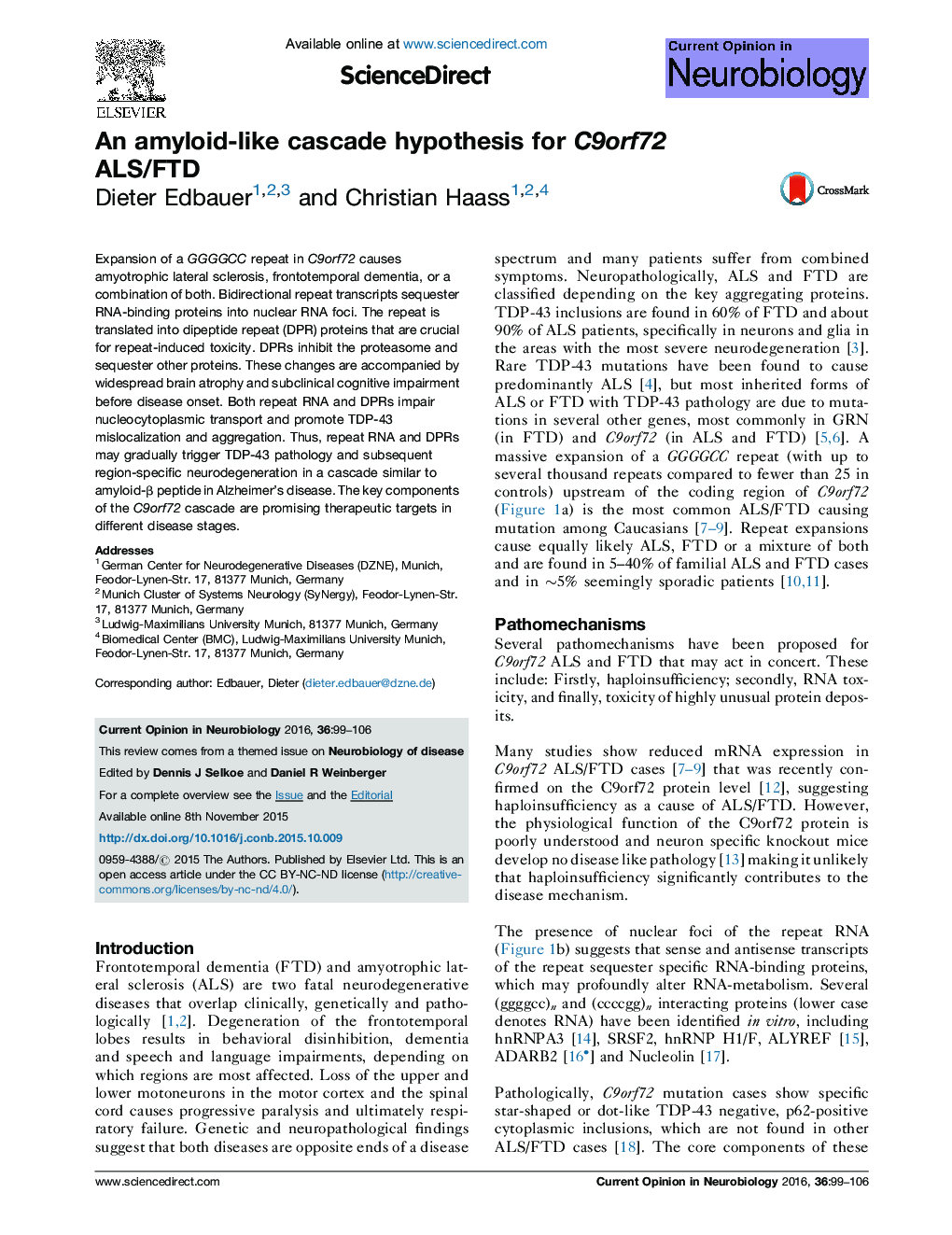| کد مقاله | کد نشریه | سال انتشار | مقاله انگلیسی | نسخه تمام متن |
|---|---|---|---|---|
| 6266287 | 1614513 | 2016 | 8 صفحه PDF | دانلود رایگان |

- Massive GGGGCC repeat expansion in C9orf72 is the most common cause of ALS/FTD.
- Repeat RNA sequesters RNA-binding proteins and inhibits nucleocytoplasmic transport.
- Repeat RNA is translated into five aggregating dipeptide repeat proteins (DPRs).
- RNA and DPRs cause early brain atrophy, cognitive impairment and TDP-43 pathology.
- A prodromal stage of RNA/DPR toxicity triggers the TDP-43 stage with clinical symptoms.
Expansion of a GGGGCC repeat in C9orf72 causes amyotrophic lateral sclerosis, frontotemporal dementia, or a combination of both. Bidirectional repeat transcripts sequester RNA-binding proteins into nuclear RNA foci. The repeat is translated into dipeptide repeat (DPR) proteins that are crucial for repeat-induced toxicity. DPRs inhibit the proteasome and sequester other proteins. These changes are accompanied by widespread brain atrophy and subclinical cognitive impairment before disease onset. Both repeat RNA and DPRs impair nucleocytoplasmic transport and promote TDP-43 mislocalization and aggregation. Thus, repeat RNA and DPRs may gradually trigger TDP-43 pathology and subsequent region-specific neurodegeneration in a cascade similar to amyloid-β peptide in Alzheimer's disease. The key components of the C9orf72 cascade are promising therapeutic targets in different disease stages.
Journal: Current Opinion in Neurobiology - Volume 36, February 2016, Pages 99-106